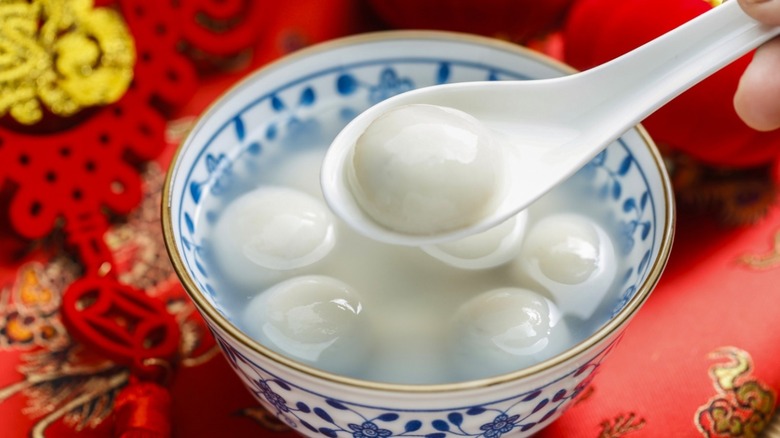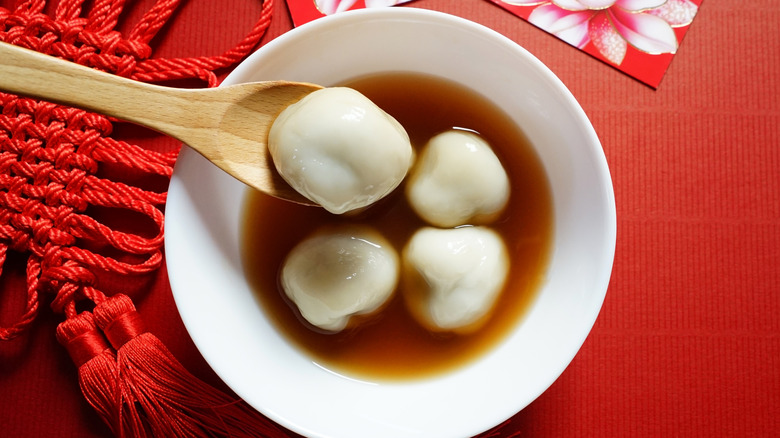The Reason Sweet Rice Balls Are A Traditional Lunar New Year Food
Chinese foods are rich with symbolism and often have illustrious legends attached to them. One reason for this is that the Mandarin language frequently uses homonyms. Two words have the same spelling and pronunciation but carry different meanings and so, they become intertwined with each other (via Nations Online). China Highlights adds that blessings and celebrations in China are rooted in traditional beliefs and superstitions, which is perhaps why food is symbolic of certain values based on pronunciation, or even shape and color.
Each Chinese celebration involves the cooking and eating of certain food items for the symbolic significance they hold and Lunar New Year is no exception. In fact, it's normal for the celebrations to center around a family feast wherein each traditional dish is said to hold a special meaning related to the onset of a new year (via Food Network). Noodles represent longevity, eating steamed whole fish brings wealth and surplus, spring rolls signify prosperity, and sweet rice balls, known as tang yuan, are a symbol of togetherness and completeness.
Sweet rice balls symbolize family togetherness
Although tang yuan translates to soup ball, tang yuan also has another meaning as is the case with several playful words in Mandarin (via KCRW). The pronunciation of tang yuan sounds similar to a Chinese phrase about togetherness and family reunion and so, is intertwined with the values of the Lunar New Year celebrations. But the importance of the sweet rice balls in the new year celebrations goes beyond that.
The small dumplings made from glutenous rice flour are served hot, in a bowl, swimming inside a ginger sugar syrup with osmanthus flowers. The round rice balls are usually white in color and are meant to look like little moons, representing the Lunar New Year (via BBC). Additionally, even the round shape of the bowl in which the sweet rice balls are served signifies unity.
The chewy rice balls can be eaten soaked in a ginger sugar syrup. Sometimes, however, the balls are also stuffed with a red bean, peanut, or a black sesame seed paste and on occasions other than the Lunar New Year, might be dyed with a pink food coloring. While nobody needs a reason to eat sweet and sticky rice balls served hot on a cold winter night, tang yuan is generally eaten in the company of family on the 15th and final day of the Chinese New Year, also known as Lunar New Year festivities, when the Lantern Festival takes place.

